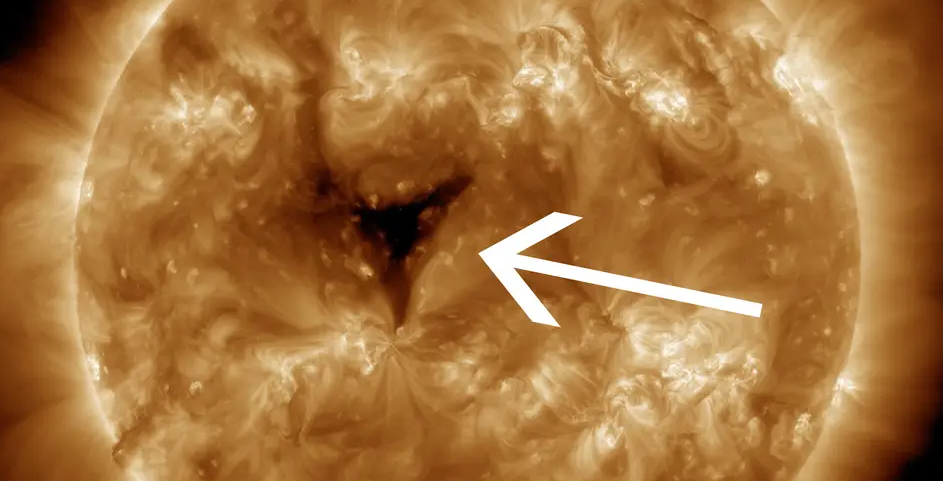A dark patch has appeared near the Sun’s equator, facing the Earth. The patch, called a coronal hole, is 60 times the width of the Earth and began blasting solar wind at the Earth on December 5. The sudden change in solar weather is part of a gradual increase in solar activity that will reach a solar maximum in the next year.
Coronal holes are dark areas in the solar corona that are cooler and less dense than surrounding plasma. Because they are regions of open magnetic fields, solar radiation escapes more easily and flies at high speeds from coronal holes. They typically form in polar regions, but they can expand into lower latitudes. When a coronal hole faces the Earth, it causes a stream of solar wind to impact the magnetosphere, creating a minor to moderate geomagnetic storm. The recent hole has caused a relatively small solar storm.
The coronal hole is an anomaly in the current pattern of solar weather. These holes tend to occur around solar minima, when solar activity decreases. However, the Sun is approaching a solar maximum in early 2024. There have been multiple major events in the past weeks that indicate an increase in solar activity. A string of sunspots formed on November 18, while a coronal mass ejection (CME), an ejection of quickly-moving plasma, created orange auroras on Earth. A solar flare erupted on November 28 and triggered auroras at lower latitudes.
An even stronger event occurred on December 14, when an enormous solar flare erupted from the Sun. It was classified as an X2.8 flare, making it the largest in six years. It caused a shortwave radio blackout and released another CME.
The solar maximum will occur between January and October 2024, according to NOAA. The Sun follows an 11-year cycle in which the solar maximum is the peak of activity. The magnetosphere protects the Earth from the worst consequences of solar flares, but the effects could be disastrous for the electrical grid in the event of a massive solar storm. In 1859, a large CME shut down telegraph communications around the world. Today, such a storm would cause trillions of dollars in damages and send important services offline. Luckily, such storms only occur roughly every 500 years. For now, the consequences of the increased solar activity are not particularly concerning.














